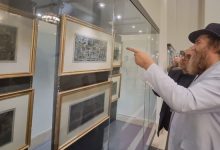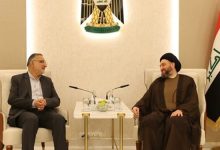The efforts of the environmental organization to preserve the cheetah

According to the environmental reporter of Fars news agency, quoting from the Environmental Protection Organization, Hasan Akbari, the Deputy Director of Natural Environment and Biodiversity of the Environmental Protection Organization, said: In recent years, the Environmental Protection Organization has focused on the protection of cheetahs in their habitats, and this year the dynamic We have had a good time in the regions, so that 7 female yaks were observed in the form of three families, which we hope for the future of its habitat.
He said: “During the past years, inevitable opportunities for geese reproduction in captivity were achieved, but until 1400, due to various reasons, including the low fertility of male geese (Kushki), lack of natural mating, etc., this did not succeed. Experts from abroad are also used.
Akbari continued: Mating, artificial insemination and the use of foreign consultants did not lead to the birth of cubs in those years until in 1400, in the first year of “Iran” mating in a completely natural way with a wild male ibex called “Firooz” got pregnant and three puppies were born by caesarean section.
He said: On the third day after the birth of the cubs, one of the cubs died, and in the autopsy performed by the veterinarian, according to his diagnosis, the cause of the death of the cub was congenital adhesion of the pleural membrane to the left lung.
The deputy of the natural environment of the organization stated: The two remaining ostrich cubs suffered digestive problems in the following days and symptoms of severe constipation were observed in them. In coordination with the Semnan Veterinary Faculty, the cubs were examined by a specialist veterinarian according to the recommendations immediately for additional tests and treatment. It was sent to Tehran, but unfortunately one of the cubs died at the very beginning of the journey.
Akbari clarified: The third cub, who was later named Pirouz, arrived in Tehran in an unsuitable physical condition. Severe lack of body water, serious constipation, etc. were among the problems of this puppy. He was treated immediately, but several problems occurred to this puppy regularly, and he was treated using the available veterinary capacities. For this reason, Dr. Peter Caldwell, a veterinarian with South African experience, was invited to Iran for better treatment and to use the experience of foreign consultants in keeping Pirouz.
He said: In the presence of South African veterinarian Dr. Caldwell, Pirouz was examined and in addition to the temporary treatment of Pirouz’s constipation and other physical problems and the replacement of powdered milk and his diet, kidney failure was also diagnosed in blood tests, and medicine was prescribed to treat it. became.
Akbari continued regarding the “Victorious” treatment process: After Dr. Caldwell’s return to South Africa, the treatments and care continued under the advice of him and Dr. Bastani, a veterinarian of the Environmental Protection Organization, and sometimes with the help of local veterinarians, and to monitor the health status. The whole animal from Pirouz was subjected to repeated ultrasounds, graph preparation and blood tests, and possible problems were resolved by prescribing drugs by Caldwell.
He pointed out: One of the most important problems of Pirouz was that it was not compatible with any of the existing milk powders and even the milk powder that was presented by Peter Caldwell, so it had very little nutrition, and its lack of weight and especially weak bone structure caused further problems for it. Even after becoming a carnivore, it was very difficult to add calcium supplements to Pirouz food, and lack of calcium was always one of our concerns.
Akbari said: On March 5 of this year, after routine treatments for gastrointestinal disorders in the cheetah cub and failure to respond properly to the treatments and suspicion of gastrointestinal obstruction, the cheetah cub was transferred to a veterinary hospital with the diagnosis of inappropriate conditions.
He said: Pirouz was scanned the same night after anesthesia, and his digestive system and bladder, which were full of urine, were emptied and complete tests were taken. It was very difficult for the animal to excrete feces and urine, and it had a serious problem in this field, and the lack of excrement had caused complete anorexia in the animal.
Akbari said: “Unfortunately, at the same time, the kidney failure that was already present has recurred and this time it has become more acute. After taking the necessary samples, he was put under gastrointestinal and kidney care. But this time, unlike before, the treatment measures on the kidneys did not work and peritoneal dialysis was performed on the animal, but unfortunately, the response to the treatment was not done due to the acuteness of the disease, and the animal died on the morning of Tuesday, March 9 of this year at the Central Veterinary Hospital. .
He said: “Anyway, the organization used domestic and foreign veterinary capacities to treat the cheetah cub and always tried to protect Pirouz as a symbol of the Iranian cheetah that was loved by the people in every possible way.” The fact that there was an error by the veterinarian in the past in the treatment and prescription of drugs is a matter that will be investigated by experts after a complete review of the documents.
Akbari stated: In the case of the corpse, the autopsy will be done and the pathology tests will be done in full, and the treatment process and previously prescribed drugs will be documented and coordinated with the competent authorities, in addition to providing more complete information about the cause of death, with any possible shortcoming. Necessary action should be taken.
He clarified: But before proving this issue, one should not destroy the country’s human resources in the field of veterinary medicine, which often helped to treat Pirouz out of interest in the country’s wildlife.
In the end, the vice president of natural environment and biodiversity of the organization stated: Fortunately, Iran’s cheetahs have mated again this year, and the capacity of female cheetah cubs (Toran and Azar) has been added to the breeding center in captivity in Turan National Park, and it is possible to continue the activities of Research and reproduction in captivity are provided with much better conditions and valuable experiences than in the past. We hope that in the first place, with the help of people, we will be able to preserve the cheetah generation in the wild and not need to reproduce it, and in the second place, we will be able to use the available capacities to reproduce the species first in captivity and in the future, to release the next generations in semi-captivity conditions. prepare
end of message/
You can edit this article
Suggest this article for the first page

